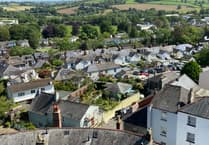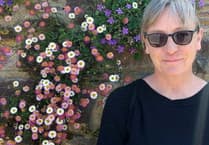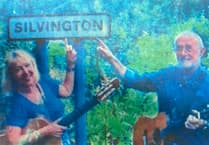SALCOMBE has lost its position as the ‘most expensive coastal town in Britain’, according to the latest house price survey produced by the Halifax.
Using Land Registry house price figures – from actual sales of properties – Sandbanks, near Poole, Dorest, is now the most expensive, with average sale prices reaching almost £665,000, pushing Salcombe in second place at almost £540,000 – a fall of more than £130,000 on last year’s staggering £672,874.
Dartmouth has dropped down one place to sixth, with a slight fall in average house sale prices from £403,767 to £401,361.
Bigbury-on-Sea, which was placed ninth last year, has fallen out of the list altogether, as Cornish towns Fowey, St Mawes and Wadebridge have forced themselves into the top 10.
The average property price in the 196 UK’s seaside towns surveyed by the Halifax has increased by 32 per cent from £166,565 in 2006 to £219,386 in 2016.
Martin Ellis, a housing economist at Halifax, said: ’Seaside towns are highly popular places to live, offering sought-after scenery, weather and lifestyle which no doubt come at a price.
‘They also attract those looking for holiday properties, which add upward pressure on house prices, which our research shows have increased by an average of £440 per month since 2006.’
But buying a first home in the South Hams remains out of reach for many local people, with average house prices still around 14 times average salaries.
Last October, South Hams councillors were warned that Government proposals to sell off housing association homes and challenge rules forcing small-scale developers to build affordable homes as part of their projects would only make the housing crisis worse.
Cllr Brazil told a meeting of the council that Government moves to encourage the building of starter homes with a 20 per cent discount on rural exception sites will actually lead to a decrease in affordable housing,
He claimed the proposal would result in homes being built that are still well out of the reach of people living in a low-wage economy area, such as the South Hams.
He said the starter homes plan would not work in a rural area, like the South Hams, where a 20 per cent discount would still leave people needing an income of more than £50,000 to buy one.
The average wage in the South Hams is around £20,000, according to 2013 figures released by the district council. ‘In order to buy a house with a 20 per cent discount, you would need a household income of £50,000 to £60,000. We live in a low-wage economy and that does not help our population.’
South Hams Council’s hopes of delivering more affordable properties – classified as homes at 80 per cent of the market value – for local people were recently dealt a blow when it lost a planning appeal over the proposed 240-home West Dart development at Dartmouth.
The council had wanted developer Millwood Homes to build something between 20 and 30 per cent of the homes as affordable.
But, after the planning appeal, only 11 per cent of the multi-million pound development will be affordable housing – a figure Dartmouth mayor Rob Lyon described as ‘extremely disappointing’.
District and county councillor Jonathan Hawkins, who spoke at the appeal hearing, said it was a ‘lost opportunity’ for Dartmouth.
‘I am very surprised and saddened that the inspector came to this decision,’ he said.
‘For those local families and individuals this is a real kick in the teeth in trying to find a home in Dartmouth.’
Cllr Hawkins had told the planning hearing the percentage of affordable housing on offer was an insult to Dartmouth.
He said for many years affordable housing had been a priority for South Hams Council as well as for communities in Dartmouth and Kingswear.
‘Affordable housing is essential to the sustainability and survivability of the town,’ he said.
‘We are at breaking point and need housing for young people to rent and affordable housing to buy so that families live here for 12 months of the year and children go to school here and use facilities such as the library.
‘The percentage they are offering is not acceptable.’
Elsewhere in the South Hams, residents in South Brent are demanding affordable homes following the revelation that the cheapest available house on a new development will cost nearly £300,000.
Those interested in buying affordable homes in South Brent had joined the developer’s mailing list, but were disappointed to receive a list of prices of the first homes to be put on sale – starting at £285,000 for a three-bedroom property.
And in a double whammy for those on local incomes looking to buy in the village, all the affordable homes on the Cavanna Homes estate now look set to be rented. Initial plans had been for four of the 14 affordable units to be offered on a shared ownership basis.
A resident, who did not wish to be named, said: ‘I, and a lot of other youngish South Brent residents, put our names on Cavanna’s mailing list in the hope of being able to afford one of their affordable houses. Yesterday we were emailed the price list, which start at £285,000, which after doing a bit of Googling, I found out is 12.5 times the average South Hams salary!
‘This has sparked a lot of debate, as very few people in the village will be able to buy their houses. Numerous people that had been holding out for a house in the development have said they will now have to leave the village and move to Ivybridge.
‘So it appears the houses will not be bought by local young families who desperately need affordable housing.’
John Presley, chairman of South Brent Community Land Trust, an organisation working towards constructing a number of self-build, straw bale and oak-framed affordable homes in the village, said: ‘It’s wrong that people who work can’t afford to buy houses. Everyone in the community land trust works, but no one can afford a house here.’A spokesman for Cavanna Homes said: 'We have only recently started building 40 new homes at Palstone Meadow at South Brent and the first prices to have been released are for the larger open-market homes. “Fourteen of the new homes we are building at Palstone Meadow will be designated ‘affordable housing’ and provided through Westward Housing Group – a housing association with 7,500 homes across Devon and Cornwall. These one, two and three-bedroom affordable homes represent 35 per cent of the total development. It is proposed that all 14 will be available for affordable rent to people in housing need who live in, or have a local connection to, the South Hams. Applications for the affordable homes at this development need to be made through Devon Home Choice www.devonhomechoice.com. The development should be completed by the end of 2017. 'Cavanna Homes offer the Help to Buy scheme on their open market homes which enables eligible homebuyers, who are able to place a five per cent deposit on a new home, to take out a 75 per cent mortgage with the help of a Shared Equity Loan from the Government of up to 20 per cent of the value of the property.'Neil Edwards, Westward’s Head of Development, said: 'Cavanna Homes, as part of the Palstone Meadow development in South Brent, are building 40 new properties - of which 14 will be affordable homes for Westward Housing Group. 'We had planned for four of these 14 homes to be for shared ownership but are in discussion about changing them to being available for affordable rent. This is because our experience on other sites within Dartmoor National Park has shown, due to planning regulations, it has been difficult for potential applicants to gain mortgages for the new homes. 'The Section 106 planning agreement requires the applicants to have a local connection to the park but also restricts them from eventually being able to buy the freehold of the property. This in turn tends to deter mortgage companies from lending on the homes. So, to ensure these homes can be still available to local people in housing need we want to make them available for affordable rent. 'We remain committed to shared ownership and continue to offer a proportion of homes on all our developments that don’t have these restrictions.'
In Kingsbridge, the town council, realising that even the ‘affordable’ homes delivered by the district council are often way out of reach of many local people, the council has been looking at alternatives – including building on land it owns.
Meanwhile, in Totnes, it has been suggested houseboats, homes made out of shipping containers and bedsits above garages could be the answer to a growing housing crisis that is driving young people out of the town.
The innovative ideas were raised by district and town councillor Jacqi Hodgson as part of the Neighbourhood Plan debate aimed at blueprinting future development in the town over the next 25 years.
The houseboats could be moored on the River Dart around the area of the industrial estate providing low-cost housing for young people desperate to leave home but faced with unaffordable local rents, she said.
The shipping container homes could be sited on the industrial estate, mirroring projects that are already going ahead in places such as Brighton. And underused blocks of garages in the town could have a second storey built on to them providing affordable bedsit-style accommodation.
‘It could open up a new community of affordable homes for young people so they can start to save up for mortgages,’ she said. ‘At the moment so many young people cannot get onto the housing ladder and get caught up in a mix of high rents and huge house prices the moment they leave their family.’
She added: ‘We have really got to start looking at alternative ways of doing things for the sake of our young people.’




